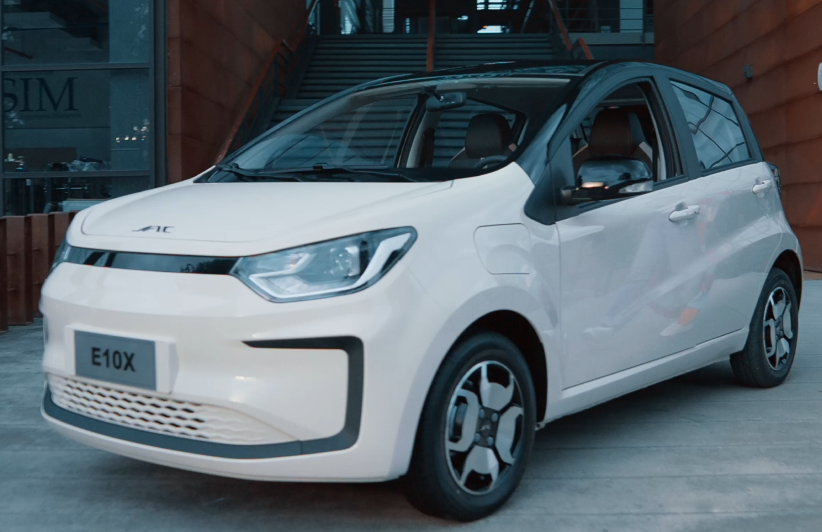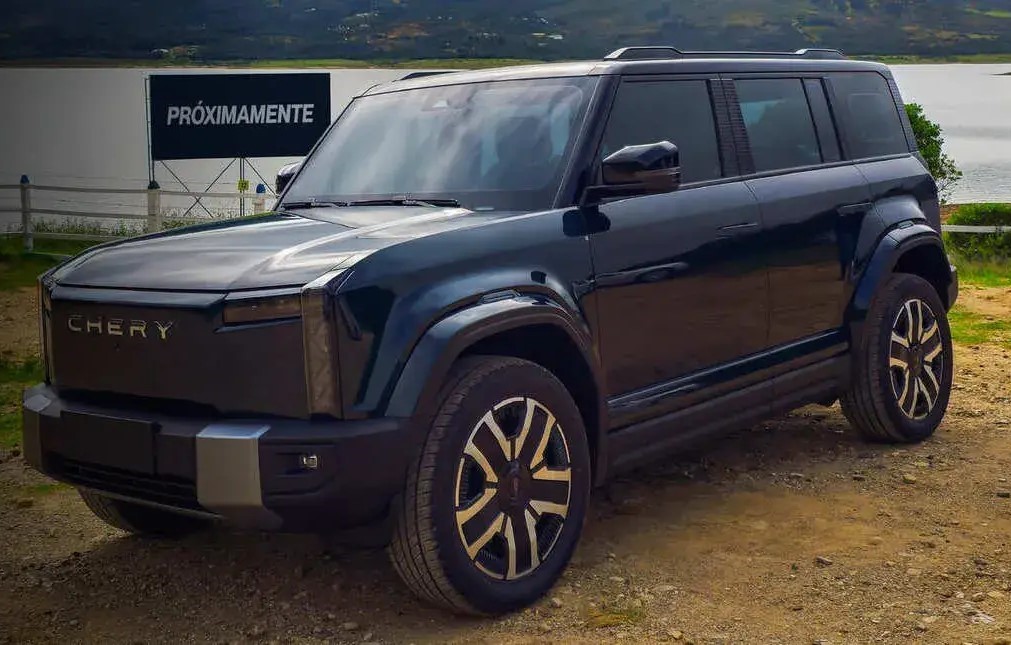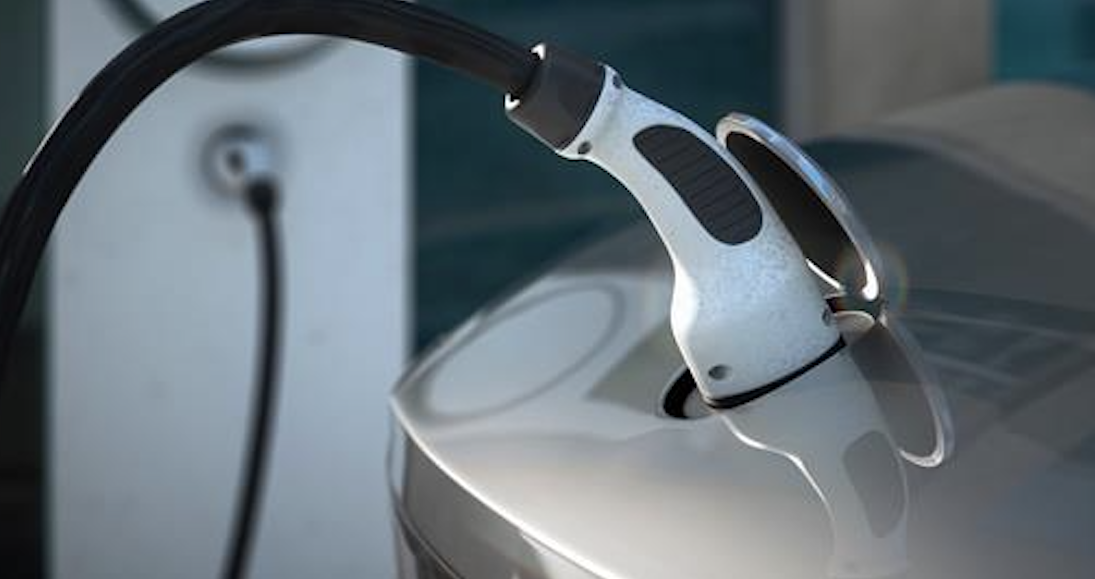Last Updated on: 5th July 2025, 11:47 pm
Chinese EVs started arriving early on in Latin America, if only by a trickle of old workhorses such as the BYD E6 (back when European EVs were nearly as affordable as the Chinese ones, and with much better design). Entering the mainstream took longer, and the first push to gain real market share would only start in Costa Rica in late 2023, when Geely launched a price-war by slashing the cost of its Geometry E. BYD followed suit in Brazil, Mexico, Colombia, and Uruguay, whereas Tesla led the charge in Chile back in early 2024.
Market share rose rapidly and we got ourselves some egregious headlines, such as this one, pointing to growth in excess of 1000%. Alas, all good times come to an end, and as the pressure downwards for EV prices stalled, growth also somewhat slowed, particularly when measured month-to-month (instead of YoY).
However, in the past few weeks, we’re again seeing more and more announcements of new, affordable EVs arriving in the regional market, and since I know our neighbours to the north may not be well informed on what’s cooking around here, I decided to make a short report on the newly available EVs in Costa Rica, Chile, and Colombia.
Costa Rica: the Geely Geome first lands outside of China
Long known for its leadership in EVs (even if recently surpassed by Uruguay), Costa Rica became the first country outside of China to receive Geely’s new champion: the Geely Geome, which will replace its previous bestseller: the Geometry 3. The Geome improves on its predecessor with a slightly larger battery, a more powerful motor, a bigger size, and a more modern design, while maintaining an impressive sticker price of $22,900 (taxes included).

A comparison is apt with the ICEV competition, as I’ve repeatedly said that price parity is essential if EVs are to compete with ICEVs in developing markets that don’t have much in the guise of subsidies:
The Geome thus seems well positioned in Costa Rica to gain market share from its ICEV competition, more so as it arrives with improved looks and specs compared to its predecessor. Its only limitation may be the battery size, which paired with a relatively low charging power (50 kW) could limit its practicality during long-distance trips.
Chile: Changan–Deepal arrives in full force
Though already present in the country, Changan aims to greatly increase its presence in Chile this year, bringing the full force of its entire lineup: Avatr, Deepal, and Nevo. In here, we will focus on the Deepal S07, a roughly Mach-E sized SUV available both as a BEV and as an EREV. Being of a more luxurious build, it’s hard to find the exact ICEV equivalent for a Deepal S07, so I’ll focus on size and power over other more subjective characteristics.

Chile has quite affordable vehicle prices compared to other countries in Latin America (the same Deepal S07 costs some $7,500 more here in Colombia), so competition is perhaps more difficult than in other markets, but we can see that Deepal stands well alongside its peers and even offers more punch for the same buck. If one were to look for a VW Tiguan with similar horsepower, pricing would slightly surpass the S07 EREV version, so there’s that. It’s also worth mentioning that the Tesla Model 3 (which has a similar size) stands at 39,900,000 CLP in Chile, meaning it’s far undercut even by the BEV version of the S07.
Colombia: Chery breaks the market with the ICar 03, JAC attempts a second EV offensive
It seems the alliance between JAC and Auteco has now ended, and the company has decided to re-enter the Colombian market with the renewed version of its two old models (JAC E10X, JAC E40X) and a new one, the JAC E30X, which has become the face of the brand.
The JAC E10X (city car) and JAC E30X (hatchback) are now some of the most affordable EVs in the country. Though, that’s mostly thanks to a 10,000,000 COP ($2,500) discount that applies to the JAC E40X (SUV) as well. Prices presented in the following charts include this discount, and it’s my opinion that JAC depends on sustaining it if it’s to gain a meaningful presence in the market, as, without it, the pricing is simply not competitive for either model. For example, the E10X without this discount would be as expensive as the BYD Seagull, and the Seagull is a much better vehicle overall.

The JAC E10X is a real alternative for price-sensitive EV buyers, but — unlike the Geome in Costa Rica — it remains more expensive than its immediate ICEV competition, and, due to its small battery, it’s also not an ideal vehicle for long- or even medium-distance trips. Likewise, the JAC E30X remains competitive within its segment, with its higher price being somewhat justified not only by its electric powertrain, but also by having the best ADAS available for any similar hatchback; however, it’s still more expensive, less powerful, and more limited in long-distance trips than its ICEV competitors:

Finally, we come to the JAC E40X, a nice looking, decently equipped SUV that had the bad luck to arrive at the exact same time as the last model on our list: the frankly impressive Chery ICar 03.

The ICar 03 is a small, square-ish, rugged SUV, available both in 4×2 and 4×4 configurations, that shoots at the hearth of the segment with a strong design that reminds of classical off-roaders like the Jimny or even the Mercedes G-Class. It boasts a decently sized battery, a motor with enough power to make itself felt, a decent amount of ADAS, and a price clearly aiming to dethrone the Yuan Up — and, why not, perhaps also take a significant chunk of ICEV market share for itself.
Now, the car has just arrived and I could be getting ahead of myself, but, frankly, there’s too much to like (and every single reviewer so far has loved the quality and built); so long as it remains the same price, I expect this model to be a national success.

Chery, like BYD, arrived early in Colombia, even gaining a small loyal following due to its affordable vehicles. However, it left for a few years and that harmed its reputation, as some of its costumers lost access to technical support (this happened with several Chinese brands in Latin America in the 2000’s and early 2010’s). Chery only officially came back in 2023 and only started selling new vehicles in 2024, so it may take it a while to recover lost ground.
Oh, and JAC’s models are arriving with GB/T fast chargers, something more and more uncommon in Colombia’s market, which has pivoted to the CCS2 rapid charging standard. This could also limit their appeal with costumers interested in long-distance trips.
Final thoughts
EVs arriving in Latin America are not limited to this list: in other articles, we mentioned already the Chevy Spark EUV in Mexico and the Haval H6 and Tank 300 in Brazil. Also, even though not mentioned above, there are also some pretty competitive models that got here a few months ago (e.g., Neta V in Ecuador, Nammi 001 in Chile, GAC Aion ES in Colombia).
This all means that we’re finally seeing an ecosystem where EVs are reaching price parity with ICEVs in most segments, one of the critical milestones to be reached if our markets expect to get a decent level of electrification. More importantly, now we have several EVs competing in the same segment, providing alternatives to costumers, incentivizing producers to keep prices low, and further strengthening the EV ecosystem in the region.
However, aside from a few markets (Costa Rica), we’re not yet at a point where EVs can consistently be considered as affordable as ICEVs. Specifically, we’re at a point where EVs fall roughly on par with the average of the segment (except for city-cars, which are still more expensive), but we still find the most affordable ICEVs to undercut the most affordable EVs by a significant margin. Even in Costa Rica, we see that ICEVs are more expensive than in other markets, meaning the EV advantage is probably due to ICEV taxes and/or tariffs.
Affordable ICEVs lean on legacy engineering with design and technology long paid for: the Renault Sandero, for example, is produced in an amortized factory and uses a platform developed by the Renault–Nissan Alliance more than a decade ago. Meanwhile, the Geely Geome or the JAC E30X uses newly developed platforms exclusive for electric vehicles, and is still paying their factories and R&D.
And this makes me wonder something. I’m certain that we will reach price parity, and that we will reach it sooner than most people think (even if relying on smaller batteries to do so at the beginning). But I now believe there’s a chance that ICEVs will become more expensive before EVs come down in price: as their economies of scale reduce and as they lose market share, it may well be that they have to increase their price just to keep the lights on, and this could happen before EV companies can lean on their own legacy engineering and already amortized factories to produce (and export) hyper-affordable EVs.
What do you guys think?
All images taken from each automaker’s official website.
Sign up for CleanTechnica’s Weekly Substack for Zach and Scott’s in-depth analyses and high level summaries, sign up for our daily newsletter, and follow us on Google News!
Whether you have solar power or not, please complete our latest solar power survey.
Have a tip for CleanTechnica? Want to advertise? Want to suggest a guest for our CleanTech Talk podcast? Contact us here.
Sign up for our daily newsletter for 15 new cleantech stories a day. Or sign up for our weekly one on top stories of the week if daily is too frequent.
CleanTechnica uses affiliate links. See our policy here.
CleanTechnica’s Comment Policy






